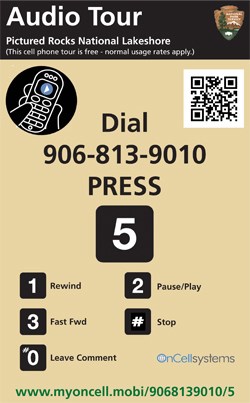|
This is part two of a four part series by Greg Shine introducing QR Codes as digital media tools for helping visitors better connect to and understand the significance of historic sites like Fort Vancouver. Greg prepared this series as part of the curriculum for the annual NPS-PSU Public History Field School. 
If bar codes represent older technology, why are they a big deal? What has changed? Essentially, bar codes represent a mid-twentieth century technology. However, there are at least two major developments that make the technology very appealing to public history and interpretation projects. One development is in the bar codes themselves. There are many different types of bar codes that serve many different functions. QR codes have been around since the mid 1990s, and are widely used in Asia for providing basic information or entertainment; I encountered my first ones in Singapore and Malaysia in 2003 without knowing what the heck they were. These codes can store a breadth of media; pretty much anything that can be associated with a URL or phone number — or even a specific text or SMS. A more important development is that of access. Companies are crafting more and more devices (and applications for devices) aimed at individual consumers. The exclamation “lightning speed!” is not accurate enough to describe this celerity. A quick digression: seven years ago, I had a blast – literally –while registering for wedding presents at one major department store. The clerk gave us a code reading “gun” (reminiscent of a Star Wars blaster toy I had as a kid) that allowed us to point and zap any product and immediately upload it to our registry. We still joke about some of the wacky things I added just for the fun of it. Now, a special device is not necessary to do this; a consumer only need point their smartphone’s camera at a barcode and it instantly reads and (in the case of some stores) uploads it to a wedding registry. Or a birth registry. Or a birthday registry. You get the picture. By my rough count, there are hundreds of different applications that the general public can use to personally access bar codes. (I have three on my mobile device now.) Also, the number of people carrying smart phones is growing exponentially. According to my colleague at WSU-V, Prof. Brett Oppegaard, "[m]ore than 90 percent of American adults own such a device, and a rapidly growing number of those machines are classified as 'smartphones,' such as the iPhone or ‘Droid. From June 2000 to June 2009, wireless penetration rates in the United States increased from 34 to 89 percent (CTIA, 2011)." To access Part 3, please click here. |
Last updated: February 28, 2015
